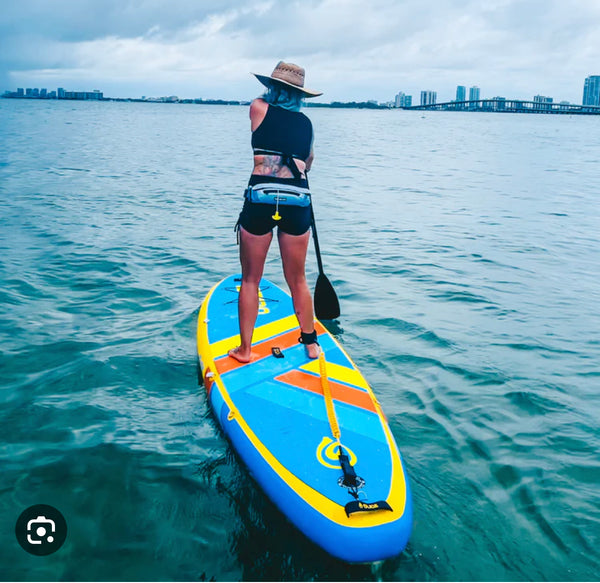
Unfolding the Physics of SUP: The Intriguing Science Behind Stand Up Paddle Boarding
Stand Up Paddle Boarding (SUP) is more than just a serene way to traverse waterways; it's a dynamic interplay of physics in motion. This captivating outdoor activity, beloved by water sports enthusiasts across the globe, seamlessly blends fitness, exploration, and connection with nature. Yet, beneath its seemingly straightforward surface of standing and paddling lies a complex world of physical principles at play. From mastering the delicate balance on a buoyant board to propelling oneself forward with precise strokes, the essence of SUP is deeply rooted in the science of physics. In this exploration, we delve into the intriguing scientific phenomena that govern SUP, including balance, buoyancy, propulsion, and maneuvering, providing insights that could transform your paddling experience and elevate your skills on the water. Uncover the fascinating science behind stand up paddle boarding and see how a deeper understanding of these principles can lead to a richer, more enjoyable SUP journey.
Key Highlights:
-
The Foundation of Balance: Explore how gravity and buoyancy interact to keep you afloat and stable on your board, emphasizing the importance of weight distribution and board centering for optimal equilibrium.
-
The Dynamics of Propulsion: Delve into Newton's third law of motion as it applies to paddle strokes, and understand how paddle design influences the force you generate, impacting your speed and efficiency on the water.
-
Maneuvering with Precision: Learn about the application of rotational physics and torque in executing effective turns and maintaining a straight path, highlighting the significance of alternating strokes for balanced propulsion.
-
Equipment's Role in Performance: Examine how the material composition and shape of your SUP affect its behavior in water, with insights into how solid boards offer rigidity and inflatable boards provide durability and portability.
-
Harmonizing with Nature: Gain strategies for adjusting your technique to the forces of wind, waves, and currents, including how understanding wave dynamics can enhance your SUP surfing skills.
-
Physiological Benefits of SUP: Uncover the comprehensive workout SUP provides, engaging core, upper body, and legs, and how maintaining balance on the board translates to improved flexibility and muscle strength.
Introduction
Paddle boarding is not just a test of balance and strength; it's a fascinating demonstration of physics in action. From achieving equilibrium on a floating board to efficiently propelling yourself forward and maneuvering through water, understanding the physics behind paddle boarding can greatly enhance your experience and performance.
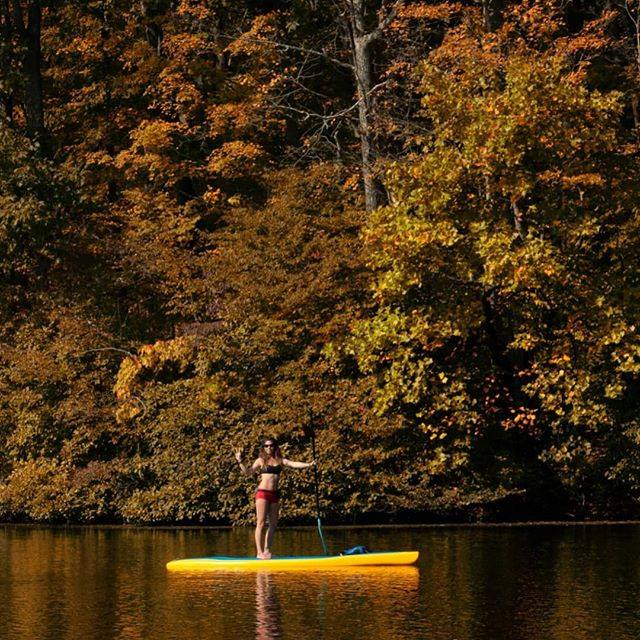
Achieving Equilibrium: The Science of Balance in SUP
The essence of paddle boarding lies in balancing atop a board on water, a feat governed by the principles of gravity and buoyancy. By distributing your weight to lower the center of gravity and standing at the board's center, you enhance stability. The board floats because it displaces a volume of water equal to its weight, plus yours, a perfect illustration of buoyancy in action.
Powering Forward: Propulsion and Paddle Strokes
Propelling a paddle board involves a complex interplay of forces. Efficient paddle strokes, driven by Newton's third law, push water backward, propelling you forward. The design of your paddle, including blade size and shape, significantly influences the force generated and, consequently, your speed.
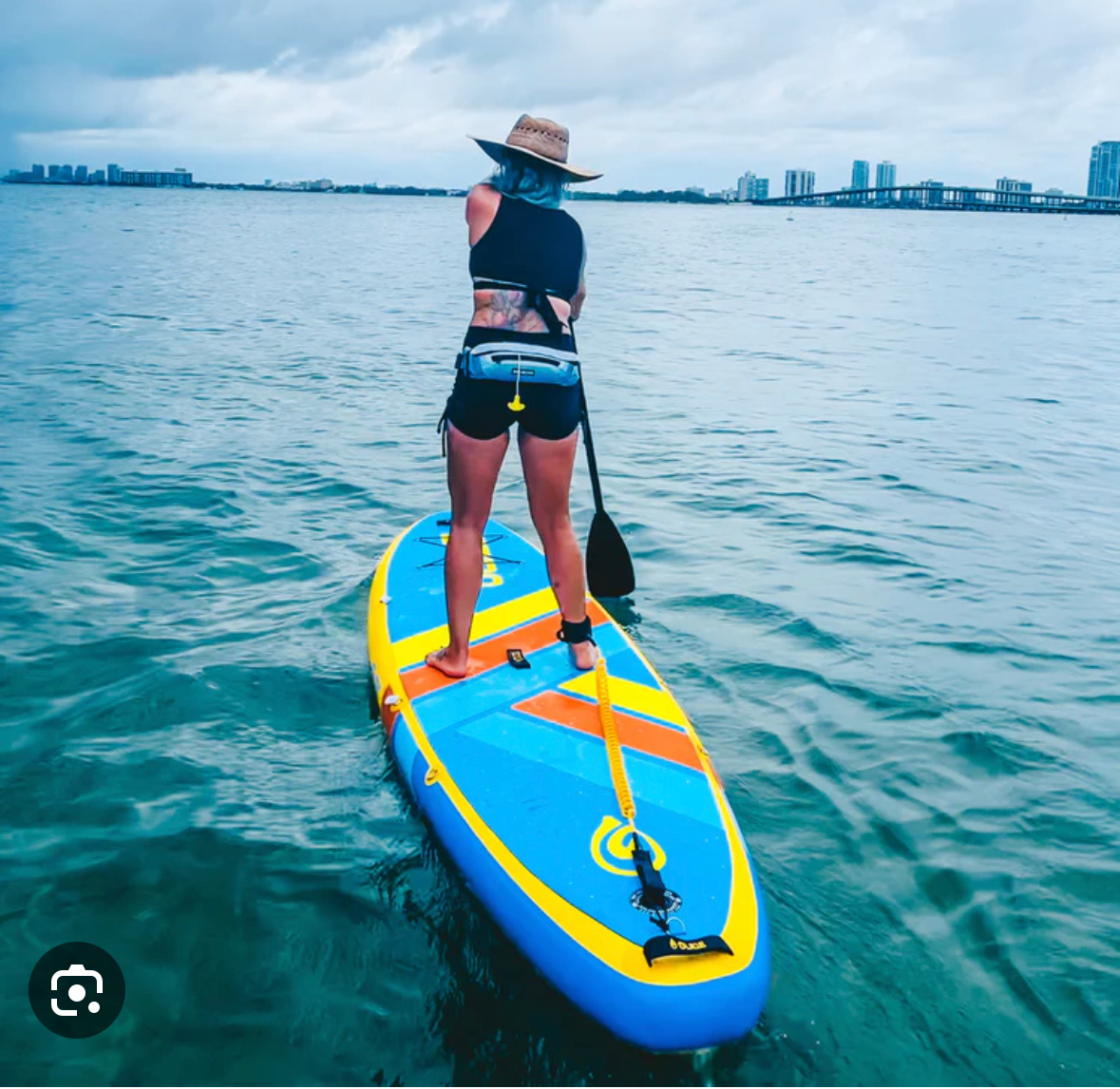
Mastering Maneuvers: Turning and Steering Your Paddle Board
Maneuvering a SUP board showcases rotational physics and the concept of torque. Techniques like the sweep stroke apply rotational force, turning the board in the opposite direction of the stroke. Consistent alternating strokes help maintain a straight path by balancing the forces applied on either side of the board.
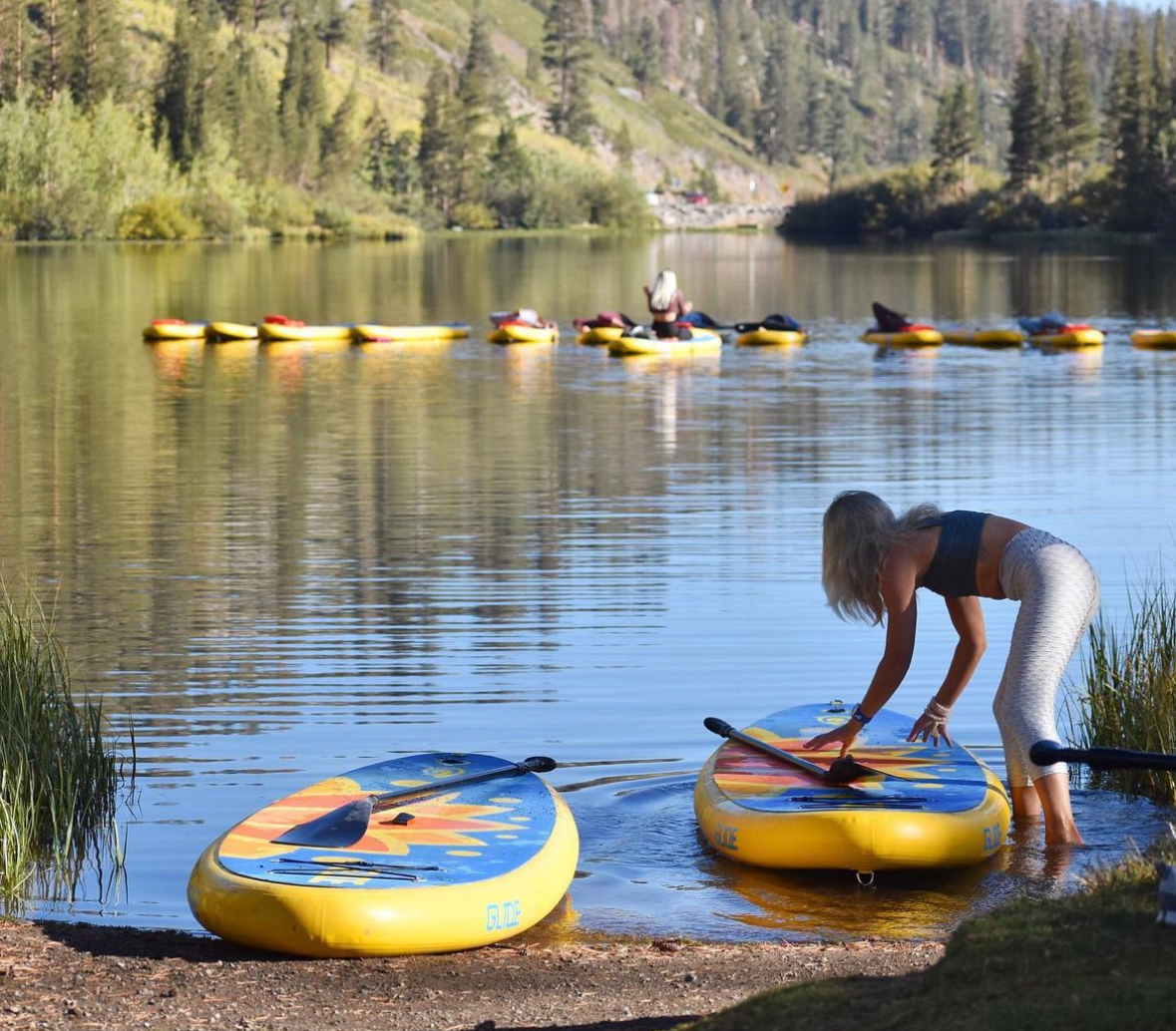
Equipment Design: Influence of Material and Shape on SUP Performance
The performance of a paddle board is heavily influenced by its material composition and shape. Solid boards offer rigidity and performance, while inflatable boards provide durability and portability. The board's shape, particularly its hull and nose design, affects how it cuts through water, impacting speed and maneuverability.
Embracing Nature’s Forces: SUP and Environmental Interactions
Paddle boarding is a dance with nature, as you navigate the forces of wind, waves, and currents. Adjusting your technique to counteract these forces is crucial for maintaining speed and direction. Understanding wave dynamics can also enhance your SUP surfing experience.
The Impact of SUP on the Body: The Physiology of Paddle Boarding
Beyond the external physics, SUP is a comprehensive workout engaging multiple muscle groups. Core strength plays a pivotal role in maintaining balance, while the paddling motion works the upper body and shoulders. The constant adjustment for balance also strengthens the legs and improves overall flexibility.
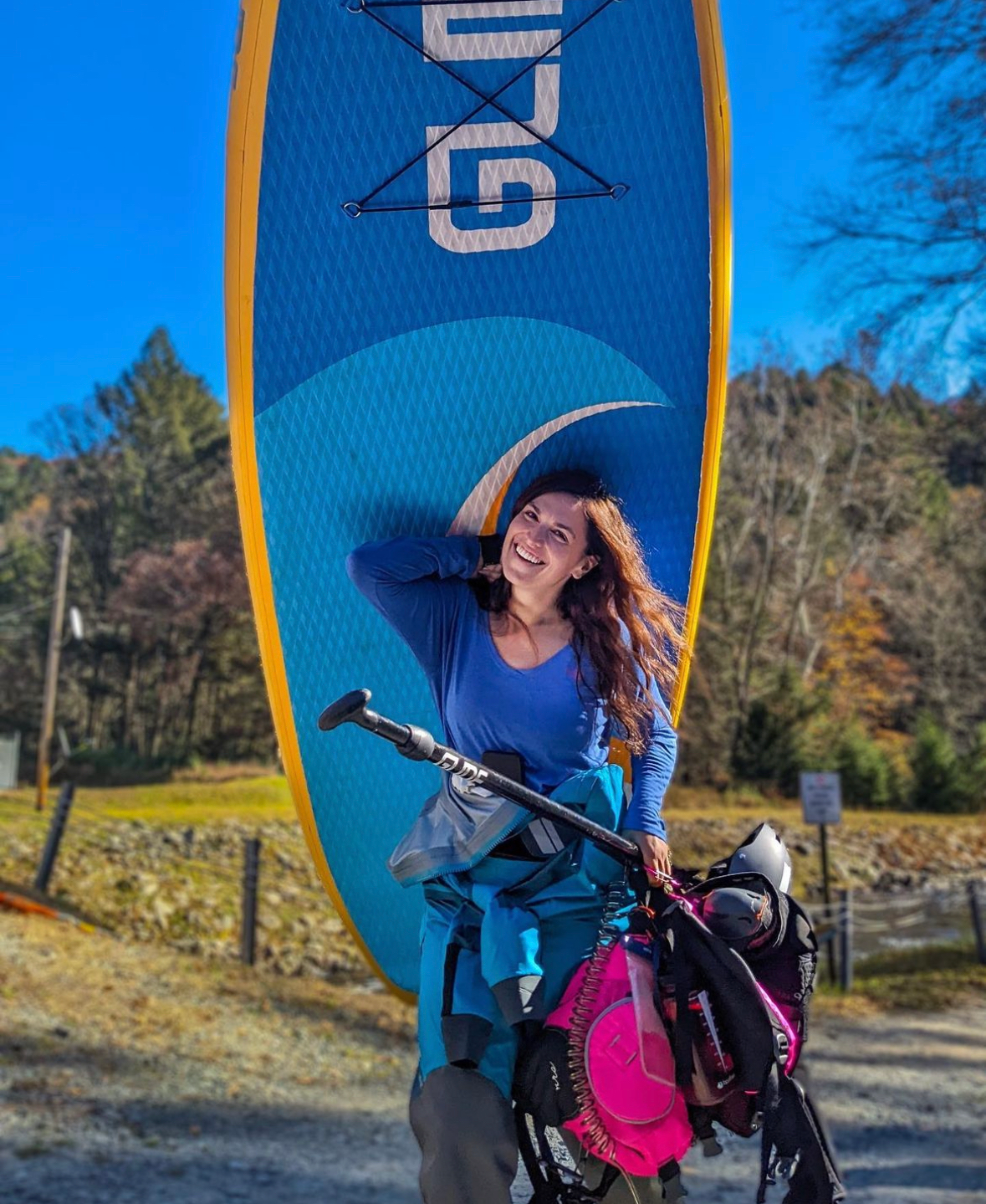
Conclusion
Stand-up paddle boarding beautifully marries physical exercise with the elegance of physics. By appreciating the scientific principles at play, paddlers can improve their technique, navigate challenging conditions more effectively, and enjoy a deeper connection with the water. So next time you're on your board, remember the fascinating science that keeps you afloat and propels you forward.
Footnotes
-
https://www.glidesup.com/blogs/expert-advice/how-to-stand-up-paddle-board ↩
-
https://www.glidesup.com/blogs/expert-advice/how-hard-is-it-to-learn-to-stand-up-paddleboard ↩
-
https://www.glidesup.com/blogs/expert-advice/how-to-paddle-board ↩
-
https://www.glidesup.com/blogs/expert-advice/paddle-boarding-on-a-windy-day ↩
-
https://www.glidesup.com/blogs/expert-advice/how-to-turn-your-sup ↩
-
https://www.glidesup.com/blogs/expert-advice/paddle-boarding-tips-for-beginners ↩
-
https://www.glidesup.com/blogs/expert-advice/how-to-paddle-board-like-an-expert ↩
-
https://www.glidesup.com/blogs/expert-advice/sup-tips-for-beginners ↩

